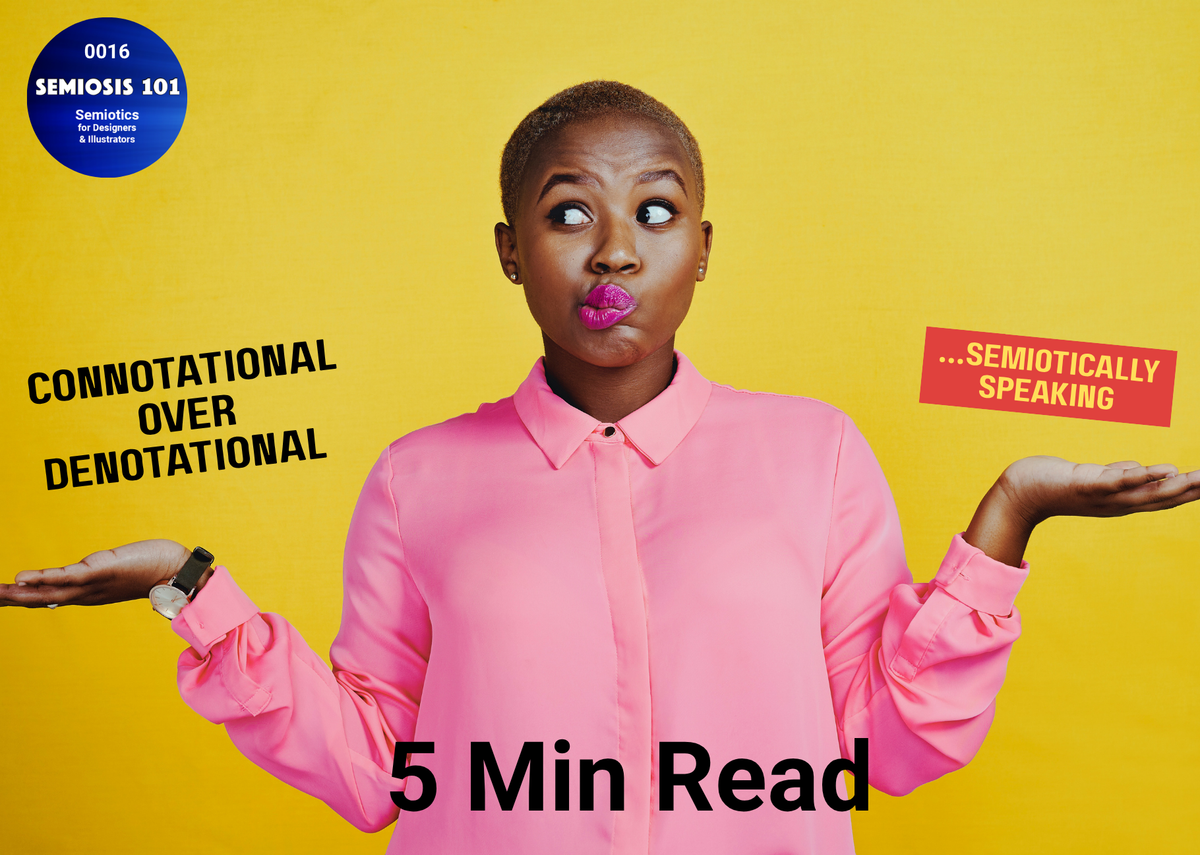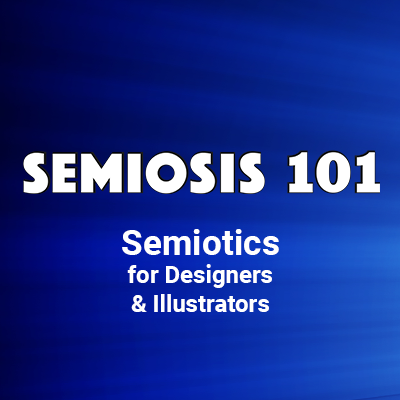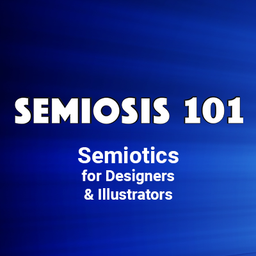BLOG 16: Connotational over Denotational …Semiotically Speaking

Semiosis 101 - 5 minute semiotic read
In illustration or design we visually communicate in one of two ways. Each visual element we utilise in the visual language we choose is either detonating that it represents itself as THIS is THIS; or connotatively, THIS representation of THIS actually means THAT other thing. You draw a tree. Denotatively it ‘looks like’ a tree so can be safely interpreted as a representation of a tree. THIS IS THIS!
Job’s a good’un. Nothing more to see here, yes?
True. But we all know that humans are not so simple animals. If we were then great literature, plays and films wouldn’t exist as we wouldn’t have proceeded beyond our first books where we learn ‘A is for Apple!’
‘A’ has much more complex communicational work to do, as does our denotative image of an ‘apple’. To connote something is to
suggest or imply other associations beyond the obvious, using analogy and metaphor. An illustration of a glass of beer in an advert is denotatively a glass of beer. But connotatively, the glass of beer illustration may be used as being visually analogous to something else, or a metaphor for a concept other than beer. These are two non-semiotic terms to frame how we visually communicate:
• A literal approach DENOTES what we explicitly SEE is what it explicitly IS.
• A lateral approach CONNOTES what we see is suggestive of something else.
Therefore, to denote is to bluntly visualise THIS only means THIS. Whereas, to connote is to subtly seduce the audience’s understanding that THIS actually is THAT other idea! To connote meaning is to involve the audience within visual communication. To connote meaning is to treat your audience as intelligent humans, rather than passive consumers, and involve them in how they will understand the visually communicated messaging. Semiosis provides the semiotic structure to semiotically facilitate this.
When it comes to visually hooking the attention of a target audience with your aesthetic, we are focussing on connotative rather than denotative semiotic meaning-making. Peirce's Semiosis utilises the sign-action power between what the concept is, how it is represented, which facilitates the audience’s interpretation to understand the intended concept.
By embedding a Peircean sign-action model in your creative ideation process you can enhance how you connotatively visually communicate. This enhancement in how you visually communicate to your target audience, rests in the communicational situation you create with your aesthetic visual language decisions and your audience’s prior lived experiences.
In Peirce's Semiosis, its sign-action power between what the concept is, how it is represented which facilitates an interpretation sets its foundation levels in Iconic, Indexical and Symbolic representation. Now these building blocks are integral in all aspects of how we design or illustrate, which leads our intended audience's interpretation connotatively to the intended concept and message.
Pragmatic semiotic sign-action helps you designers and illustrators to make connections through allegory and metaphor to use to visually communicate the concepts that your client’s brief desires. You may prefer to think of this connotative level of visual communication as the ’tone of voice’ your illustration or design is visually staging.
Denotatively an image of an apple may visually communicate ‘an apple’ but we all know an ‘apple’ can also mean a city, a tech company, etc. With applying the principles of Semiosis within your ideation phase, you can manipulate the semiotic sign-action of your visual language decisions to help your audience make lateral jumps in perceiving what is really meant.
When designing or illustrating, the composition, the crafting of your aesthetic, the type-setting, the choice of colours you use, can all visually suggest more beyond what they initially denote. After all, the aim of effective visual communication in illustration and design is to…
• get noticed by the intended audience…
• be understood by that audience…
• AND be remembered by that audience.
A single blog post cannot explain everything, so that is why the many Semiosis 101 semiotic video episodes on YouTube and Patreon are there to help explain how the theory works in practice, and why I wrote my 2026 Semiotics for Designers and Illustrators book!





